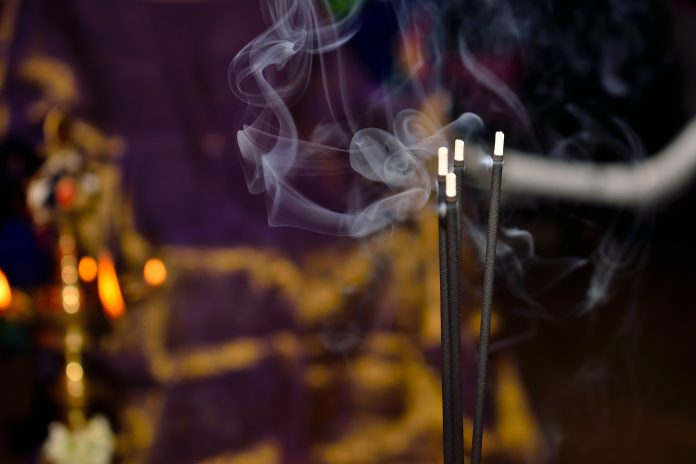The use of incense, followed by the creation of incense sticks, dates back to the first civilizations of Mesopotamia and Egypt, i.e., more than 6000 years ago, and hence, is considered one of the first fragrant materials to be used by humans. This is evident by its presence in the ingredients of balms used for mummification in Egypt, and also its use in the temples for communication with the deities, to treat themselves, and to increase their level of consciousness.
An old legend says that when a queen lost her kingdom due to an attack by the enemies, she asked God for a gift that could console her for the loss of her land and children. As she was crying her eyes out, wherever her tears flowed, trees with fragrant gums began to grow, thus explaining the existence of incense trees. These trees, also called oliban, grow only in the mountainous and arid regions of Africa like Ethiopia, and also in the southern Arabian Peninsula like Oman and Yemen.
The Romans then nicknamed the South of the Arabian Peninsula as Arabia Felix, which means happy Arabia. This is because this land was rich and fertile and it was the origin of the Boswellia tree, the family to which the oliban tree belongs. Even today, if you visit the city of Salalah in Oman, you will see the bursting aisles of the old souk of Al-Husn. The South of the Arabian Peninsula is a cradle of incense. Right from a few kilometers from the Arabian Sea shore to the border of Yemen, sacred trees grow everywhere.
Incense was transported to all parts of the world and all civilizations. A large amount of precious incense was offered to King Solomon from the Queen of Sheba’s land. The fragrant resin was also used in Jerusalem and among the Mediterranean civilizations, thus flourishing the incense trade for more than a century.
Traditions around the world
Incense is heavily used by many communities during religious ceremonies in temples, churches, and other religious places. The West uses incense as a scented raw material. In modern times, incense is available in many forms, shapes, and sizes, mostly depending on the countries where it is being used. For, example in India, incense sticks are more common while in Nepal, they enclose incense in a rice paste that is shaped like a cord. Let us have a look at some of the cultural variations in the forms and usage of incense around the world.
Chinese: The Chinese have used incense for over 2000 years in religious ceremonies, traditional Chinese medicine, ancestor veneration, and also in their daily life. The two most important ingredients in Chinese incense are sandalwood and Agarwood. Incense sticks and incense clocks became more common in China with the introduction of Buddhism, as Buddhist monasteries used incense for timekeeping as well as during meditation, and also made their way into modern Chinese society. In the traditional Chinese religion, burning incense is an everyday thing, and different types of sticks are used for different purposes. For example, incense sticks come in many colors like yellow, and red and are mostly used for ceremonies like funerals, while spiral incense that has longer burn times is hung on temple ceilings. Countries like Singapore, Malaysia, and Taiwan use large, pillar-like dragon incense sticks for their Ghost festival. Most Chinese incense sticks light traces of jasmine or rose and is used during conveying their prayers to heaven. Some Buddhists use highly scented Chinese incense sticks, which contain a large amount of sandalwood, agarwood, or other floral scents.
Arabian: The Arabs burn incense in the form of scented chips or blocks that are locally called ‘bakhoor’, which are used on special occasions like Fridays, weddings, or just to perfume the house. These chips or blocks are usually burned on a traditional incense burner and are passed among the guests as a gesture of hospitality.
Jews: The incense offered in the Temple in Jerusalem is called Ketoret, which is a mixture of onychia, state, frankincense, and galbanum, as stated in the Book of Exodus.
Indian: Agarbatti, as called in India, is an incense paste rolled or molded around a bamboo stick and is the most common form of incense in India, in which the basic ingredients are the paste made of charcoal dust, perfume ingredients, or a perfumed liquid, and gum or joss or tabu powder. Sometimes, perfume is also sprayed on the coated sticks.
Japanese: Incense is an important part of Japanese folklore that includes history, culture, art, and ceremony. The tea ceremony is one such occasion where incense is burned, just like ikebana, calligraphy, and scroll arrangement. The art of incense appreciation in Japan is called Kodo and is generally practiced as a separate art form, usually in the tea room of traditional Zen design.
Tibetan: Tibetan incense is found in Tibet, Bhutan, and Nepal, and has a characteristic earthy scent. It may consist of ingredients like clove, cinnamon, Kusum flower, shahi jeera, juniper, or ashwagandha. The recipes of Tibetan incense come from ancient Vedic texts.
The history of fumigating incense around the world is vast, not only due to its religious significance but also for spiritual purposes. Scents based on the physiological impacts of incense have also been developed which are used in aromatherapy, meditation, and mood enhancement, as well as in wellness offices and yoga studios.





























